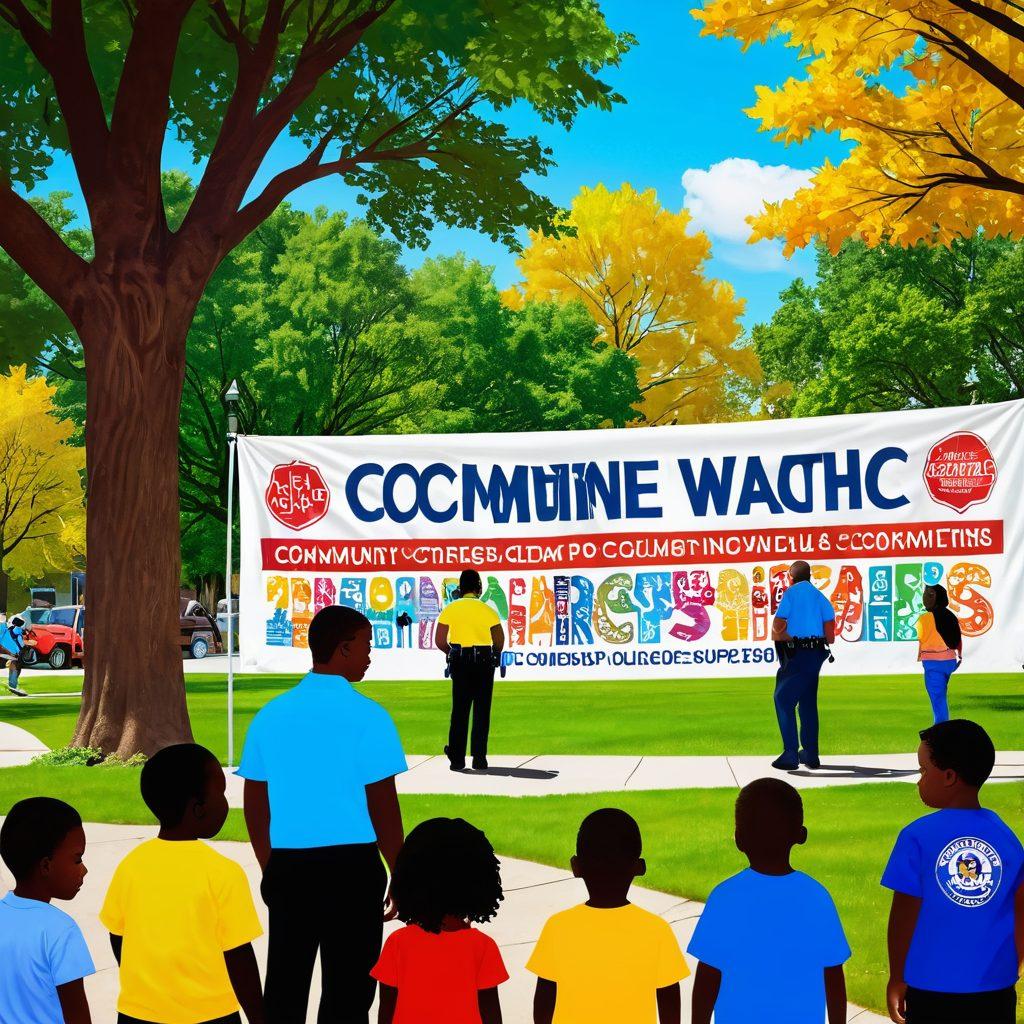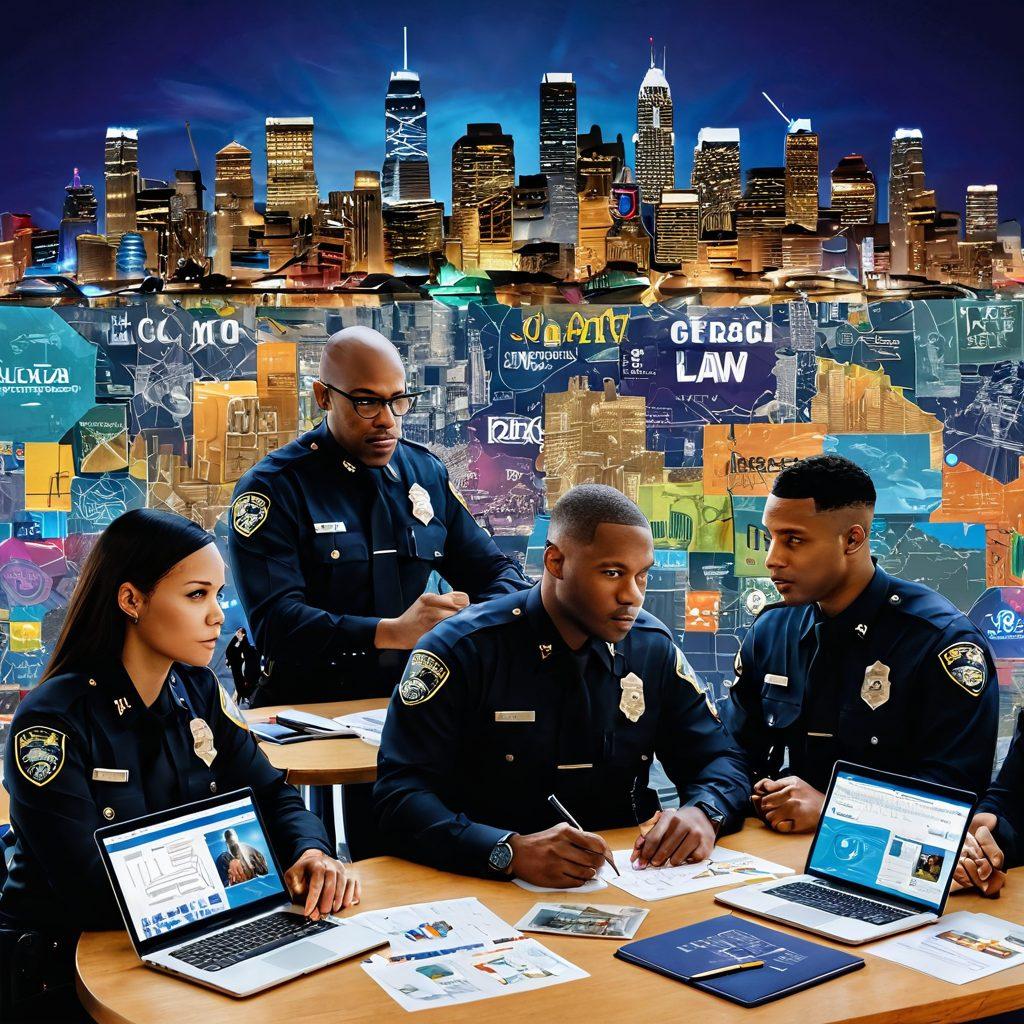Empowering Communities: Exploring Effective Policing Strategies for Safety and Crime Reduction
In a world where safety often feels like a fleeting concept, the power of community policing shines brightly as a beacon of hope. Imagine your neighborhood where residents and police officers work hand-in-hand, closely observing the fabric of their community, ready to weave in new threads of safety and trust. This isn’t just a dream; this is reality in countless communities embracing the philosophy of community policing. By recognizing that crime prevention isn’t just a job for law enforcement, but a cooperative effort, effective policing strategies help foster safer neighborhoods. So, how does community policing play a pivotal role in this safety dance?
Community policing goes beyond the badge; it’s about building bridges, not walls. The essence lies in open dialogue and shared responsibility among the residents and the local law enforcement. As the saying goes, "It takes a village to raise a child," it also takes a village to create a secure, thriving environment. Engaging citizens in crime awareness and safety education not only empowers individuals but fosters a culture of collective ownership and vigilance over community safety. Have you ever thought about how your involvement could make a tangible difference in your neighborhood?
In practice, community policing often involves community-oriented programs that prioritize collaboration between police and the public. Law enforcement agencies become more than just a presence; they morph into partners in public service. Activities ranging from neighborhood watch meetings to safety workshops enhance citizen engagement, ultimately leading to crime reduction. What happens when residents feel connected and heard? They are more likely to report suspicious activities, leading to swift interventions that could prevent potential crimes. Isn’t it uplifting to know that each of us can play a role in our neighborhood safety?
But community policing thrives only when there is trust. The foundation of effective policing strategies rests on strong police-community relations. Regular police updates, transparent communication about crime statistics, and community forums help build this critical trust. When law enforcement agencies are seen as allies rather than enforcers, it creates an atmosphere of safety awareness and proactive engagement among citizens. Imagine if the police were just a phone call away, not just for emergencies but also for sharing local insights and safety tips. How different would our communities feel? They would feel more secure due to reinforced relationships and collaborative risk management strategies!
It becomes evident that community policing is not just a crime prevention method but a comprehensive policing strategy that enriches community life. Each neighborhood has its unique challenges, and by working hand-in-hand with law enforcement, communities can innovate solutions tailored to their specific needs. With collaboration at its core, it’s about creating a unified stance against crime and fostering an environment where everyone looks out for one another. Are you ready to take action? Join your local law enforcement agency in their efforts toward community policing, and become a champion for safer neighborhoods!
Innovative Strategies for Crime Prevention: Lessons from Law Enforcement
In recent years, innovative strategies for crime prevention have gained traction in communities across the globe. As crime rates fluctuate and evolve, the question on everyone’s mind is: what are law enforcement agencies doing to keep our neighborhoods safe? This blog embarks on an exciting journey through the landscape of community-focused policing strategies that not only support public safety but also foster strong relationships between residents and local law enforcement. Are you curious about how these lessons can reshape your understanding of crime reduction? Let’s dive into the transformative world of community policing.
Imagine a neighborhood where residents feel empowered to engage with their local police department, leading to safer streets and a strong sense of belonging. That’s the vision behind community policing, a strategy designed to enhance public service through citizen engagement. With this approach, officers become familiar faces rather than distant figures, cultivating trust and improving police community relations. As former police chief William Bratton once stated, ‘The police are the public, and the public are the police. The police are only members of the public who are paid to give full-time attention to duties that are incumbent on all of us.’ How can we foster such partnership in your community?
One successful example of this type of neighborhood policing can be found in various programs that have been implemented across the nation. These community-led initiatives prioritize crime awareness and encourage residents to take an active role in their safety. The National Police Department has reported a significant decrease in crime statistics in areas where citizen engagement efforts are supported by dedicated law enforcement resources. So, what are some actionable safety tips that you can adopt today to contribute to this vision of security awareness?
Another innovative approach that law enforcement agencies are employing is the integration of technology into community safety initiatives. From social media platforms to neighborhood apps, local police departments are leveraging digital tools to keep citizens informed and engaged in crime prevention. Imagine receiving timely police updates on incidents in your area or participating in virtual town hall meetings that address safety education. By embracing technology, communities are not only reducing crime but also ensuring that residents are equipped with travel safety tips and risk management strategies to protect themselves and their loved ones.
In conclusion, the path to effective crime prevention and community safety lies in collaboration and innovation. By drawing lessons from successful policing strategies around the world, local law enforcement can strengthen its bond with residents, creating a culture of shared responsibility for public safety. The journey toward preserving community safety is not taken alone; it requires the active participation of every citizen. So, what role will you play in your neighborhood's safety narrative? Engage with your local law enforcement agency, educate yourself about crime prevention tactics, and become a vital part of your community’s story!
Empowerment through Engagement: The Key Role of Citizens in Policing Efforts
In the realm of public safety, one principle stands tall — empowerment through engagement. The essence of community policing isn’t just about law enforcement agencies taking action, but rather, a vibrant partnership among the police, the community, and citizens that fosters a safer environment for everyone. Are you curious about how citizen involvement can truly reshape the landscape of community safety? Join us as we unravel the magic of collaboration and its impact on crime reduction.
Think back to your own neighborhood. When was the last time you engaged with your local law enforcement? Perhaps you attended a community watch meeting or participated in a safety campaign. Each interaction fosters a sense of belonging and opens doors for meaningful dialogues that lead to actionable crime prevention strategies. A dynamic relationship between citizens and the national police isn't just beneficial; it's essential for effective policing strategies. By sharing experiences, resources, and safety tips, communities not only reduce crime risk but also cultivate an environment of trust and cooperation.
Imagine a community where police aren't seen as an external force, but as cherished partners in maintaining peace and security. This is the essence of neighborhood policing — the idea that community members can enhance public safety when they actively participate and collaborate with law enforcement. Consider the shared responsibility of safety education: schools can partner with local law enforcement to create programs that instill safety awareness among children. In this way, citizens become active players in the crime prevention narrative and positively influence crime statistics in their localities.
As we acknowledge the ever-evolving face of crime, we also need to examine how citizen engagement plays a pivotal role in effective policing strategies. When residents report suspicious activities or share insights about their neighborhoods, they equip government police with invaluable intelligence. This two-way street boosts crime awareness and empowers citizens to take charge of their own safety. Remember, every small action counts. Whether it's starting a neighborhood watch or simply talking to your neighbors about safety resources, each step contributes to a comprehensive crime reduction approach.
In conclusion, the future of community safety lies not just in robust policing strategies, but in a proactive and engaged citizenry. It calls for a shift in mindset — from seeing police as distant authorities to recognizing them as integral members of our communities. Are you ready to take part in this transformative journey? Together, let’s champion the cause of citizen engagement and build a safer tomorrow. After all, it's in our hands to redefine public safety, one conversation at a time.


